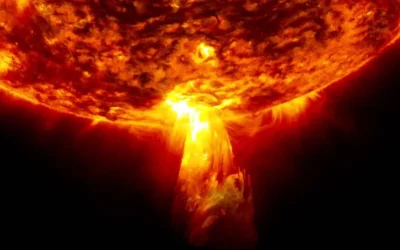
| Genitive | Apodis |
| Abbreviation | Aps |
| Pronunciation | (ˈeɪpəs) |
| Main Stars | 4 |
| Brightest Star | Alpha Apodis (3.83m) |
| Right Ascension | 13 hours to 18 hours |
| Declination | -67 deg to -83 deg |
| Sq. Deg. Area | 206 |
| Crosses Meridian | 9PM, Jul |
| Visible Lat. Range | +5, -90 deg (°) |
| Best Viewing Season | Summer (Southern Hemisphere) |
Characteristics of Apus
Introduction to Apus
Apus, a constellation in the southern sky, symbolizes the bird-of-paradise. Its name, derived from Greek, translates to “without feet,” referencing the early misconception that birds-of-paradise lacked feet.
This small constellation, ranking 67th in size and spanning 206 square degrees, is visible between +5° and -90° latitudes, best observed in July.
Q1.1. Discovery and History
Who discovered the Apus constellation?
Apus was first introduced by Petrus Plancius in 1598, based on the observations of Pieter Dirkszoon Keyser and Frederick de Houtman during the first Dutch trading expedition to the East Indies.
Johann Bayer included Apus in his star atlas, Uranometria, in 1603, marking its official entry into celestial cartography.
The constellation was named to commemorate the bird-of-paradise, aligning with Plancius’s and Bayer’s efforts to fill in the southern celestial sphere with new constellations.
How old is Apus?
The constellation Apus dates back to the late 16th century, introduced over 400 years ago. However, the stars within Apus, like all stars, are significantly older, their ages spanning millions to billions of years.
Q1.2. Astronomical Characteristics
Star Composition
Apus is known for its reddish hue stars, with Alpha Apodis leading as the brightest star at a magnitude of 3.8.
This orange giant, along with Gamma Apodis and Delta Apodis, highlights the constellation’s distinct color palette.
Two star systems within Apus have been confirmed to have exoplanets, adding to its celestial significance.
Meteor Showers
Apus does not have any associated meteor showers, focusing interest mainly on its stars and deep sky objects rather than transient celestial events.
Apus offers a unique window into the southern celestial hemisphere’s history and astronomy.
Though it may not feature bright stars or meteor showers, its deep sky objects and the story behind its name provide fascinating subjects for both amateur and professional astronomers.






